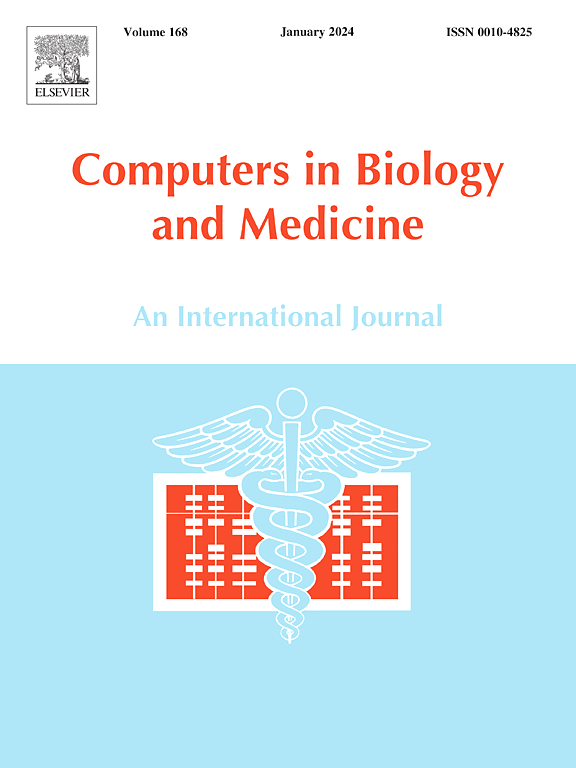How photoplethysmography can be used to detect major depressive disorder among patients with obstructive sleep apnea during sleep
IF 6.3
2区 医学
Q1 BIOLOGY
引用次数: 0
Abstract
Major Depressive Disorder (MDD) frequently coexists with Obstructive Sleep Apnea (OSA), yet it remains underdiagnosed in OSA populations due to overlapping symptoms and limited access to psychiatric sleep evaluations. Earlier studies have explored photoplethysmography (PPG) for screening either OSA or MDD individually but have not investigated the use of PPG to analyze comorbid MDD in patients with OSA. Additionally, beat-level entropy and complexity features, which quantify subtle nonlinear variations in pulse morphology and may reflect autonomic nervous system dysregulation associated with this comorbidity, have been largely overlooked. This study investigates whether beat-to-beat PPG-derived features can distinguish among healthy controls (CO), individuals with OSA only, referred to as OSA-, and those with OSA and comorbid MDD, referred to as OSA+. PPG recordings from 60 participants (CO: 25, OSA-: 20, OSA+: 15) were preprocessed to extract artifact-free segments. For each segment, skewness (Sk) and kurtosis (Ku) were computed on a beat-to-beat basis, followed by the extraction of Approximate Entropy (ApEn), Hjorth Activity (HA), Hjorth Mobility (HM), and Hjorth Complexity (HC) parameters to quantify signal variability. Feature selection was conducted within a 5-fold nested cross-validation framework using Spearman correlation, and only features that satisfied both a correlation threshold and statistical significance (p < 0.05) were retained for SVM classification. For the CO vs. OSA task, ApEn(Sk) and ApEn(Ku) emerged as the most discriminative features, achieving an accuracy of 84 % and an AUC of 0.91. For the OSA− vs. OSA + task, three features—ApEn(Sk), ApEn(Ku), and HM(Sk)—were selected, yielding an accuracy of 76 % and an AUC of 0.88. This study demonstrates that beat-to-beat variability in PPG morphology can effectively identify MDD within the OSA population. Unlike prior work, which did not investigate comorbid classification or entropy-based features, our approach addresses this gap and supports the feasibility of sleep-based PPG for mental health screening.
光容积脉搏波如何在睡眠中检测阻塞性睡眠呼吸暂停患者的重度抑郁障碍
重度抑郁症(MDD)经常与阻塞性睡眠呼吸暂停(OSA)共存,但由于症状重叠和精神病学睡眠评估有限,在OSA人群中仍未得到充分诊断。早期的研究已经探索了光容积脉搏波(PPG)单独筛查OSA或MDD,但尚未研究使用PPG分析OSA患者的合并症MDD。此外,量化脉搏形态的细微非线性变化并可能反映与该合并症相关的自主神经系统失调的脉搏水平熵和复杂性特征在很大程度上被忽视了。本研究探讨了搏动间ppg衍生特征是否可以区分健康对照(CO)、单纯OSA患者(简称OSA-)和OSA合并MDD患者(简称OSA+)。60名参与者的PPG记录(CO: 25, OSA-: 20, OSA+: 15)进行预处理以提取无伪影片段。对于每一段,偏度(Sk)和峰度(Ku)都是在节拍对节拍的基础上计算的,然后提取近似熵(ApEn)、Hjorth活性(HA)、Hjorth迁移率(HM)和Hjorth复杂度(HC)参数来量化信号变异性。特征选择使用Spearman相关在5层嵌套交叉验证框架内进行,只有同时满足相关阈值和统计显著性的特征(p <;0.05),用于SVM分类。对于CO与OSA任务,ApEn(Sk)和ApEn(Ku)成为最具区别性的特征,准确率为84%,AUC为0.91。对于OSA−与OSA +任务,选择了三个特征- ApEn(Sk), ApEn(Ku)和HM(Sk),准确度为76%,AUC为0.88。本研究表明,PPG形态的搏动变异性可以有效地识别OSA人群中的MDD。与之前没有研究共病分类或基于熵的特征的工作不同,我们的方法解决了这一空白,并支持基于睡眠的PPG用于心理健康筛查的可行性。
本文章由计算机程序翻译,如有差异,请以英文原文为准。
求助全文
约1分钟内获得全文
求助全文
来源期刊

Computers in biology and medicine
工程技术-工程:生物医学
CiteScore
11.70
自引率
10.40%
发文量
1086
审稿时长
74 days
期刊介绍:
Computers in Biology and Medicine is an international forum for sharing groundbreaking advancements in the use of computers in bioscience and medicine. This journal serves as a medium for communicating essential research, instruction, ideas, and information regarding the rapidly evolving field of computer applications in these domains. By encouraging the exchange of knowledge, we aim to facilitate progress and innovation in the utilization of computers in biology and medicine.
 求助内容:
求助内容: 应助结果提醒方式:
应助结果提醒方式:


